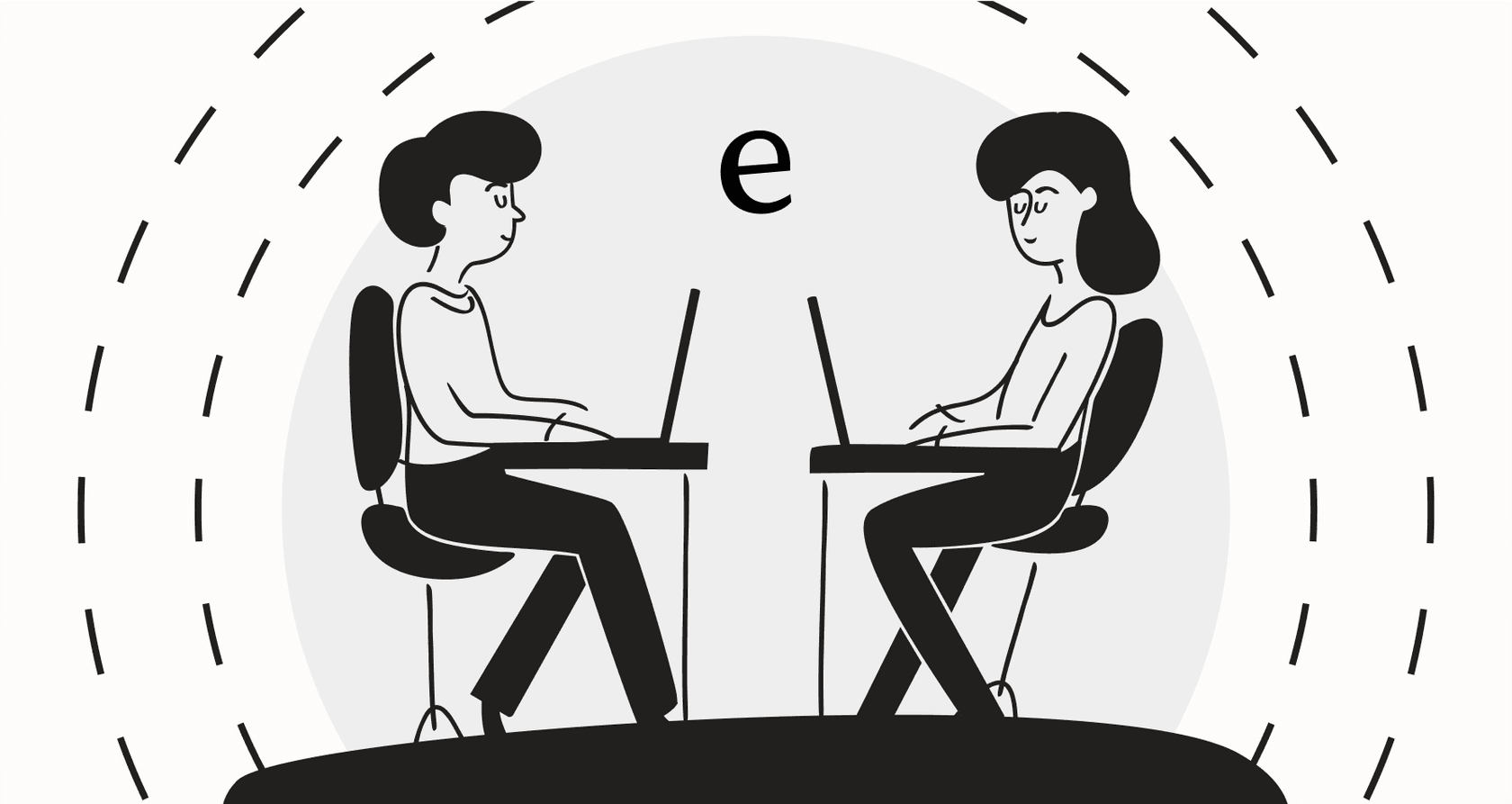
It seems like every piece of software has an AI assistant these days, and for good reason. A good one can feel like a superpower for your team, taking care of tedious tasks and digging up information in seconds. In the world of customer relationship management (CRM), Salesforce was one of the first big players to build its own native solution, the Salesforce AI Copilot.
But the AI world moves incredibly fast. That tool has since been renamed and absorbed into a bigger project called "Agentforce." If you’re scratching your head trying to figure out what it is, what it does, and if it’s actually right for you, you’re in the right place. We’ll give you a clear, honest look at its features, the setup process, its confusing pricing, and a few key limitations you should know about.
What is the Salesforce AI Copilot?
"Salesforce AI Copilot" was the original name for the company’s chat-style AI assistant, built to work directly inside its different cloud apps. Think of it as a helper you could chat with to get answers, summarize info, or start workflows for your sales reps and support agents.
However, as of early 2025, Salesforce officially retired the "Einstein Copilot" brand. The tool now lives on as the default agent inside the larger "Agentforce" platform. The name is different, but the core idea of an AI assistant for users is still there. This wasn’t just a simple name swap; it shows Salesforce is shifting its focus from "copilots" that help people, toward more autonomous "agents" that can handle tasks all on their own.
So, if you hear "Salesforce AI Copilot" today, people are really talking about the conversational AI agent within Agentforce, which is designed to help sales, service, and marketing teams get things done using plain English.
Core Salesforce AI Copilot features and capabilities
The main selling point for the Salesforce AI Copilot (now Agentforce) is how deeply it’s woven into the Salesforce world. It’s built to live and breathe your CRM data.
This video provides a great overview of how the Salesforce AI Copilot works as a conversational AI grounded in your business data.
Grounded in your CRM data
The assistant plugs right into the Salesforce Data Cloud. This means it can pull from all your unique customer data (accounts, contacts, opportunities, cases) to give you answers that are actually relevant to your business. This connection to your own data helps it avoid the kind of generic, one-size-fits-all responses you might get from other tools. It knows who your customers are and their history with you.
But while being grounded in CRM data is great, it often means knowledge living outside of Salesforce gets ignored. Your internal wikis, engineering docs, and even old tickets from a different helpdesk are completely cut off. Modern platforms like eesel AI are designed to connect all your knowledge sources, including Confluence, Google Docs, and past conversations from any helpdesk, giving your AI the full story.
Standard and custom "actions"
"Actions" are what let the AI do more than just chat. They’re pre-built tasks it can run when you ask. For instance, a sales rep could ask it to "summarize the latest activity on the Acme opportunity," and the AI would use a standard action to pull that info together. A service agent could ask it to "draft an email for case #12345," and it would generate a reply.
Salesforce gives you a library of these standard actions to start with. But the real power (and the real headache) comes from creating custom actions with tools like Flow Builder and Apex code. This lets you bend the AI to your specific business processes, but it’s not for the faint of heart.
The Einstein Trust Layer
With any AI, you have to worry about data privacy. Salesforce’s answer is the Einstein Trust Layer, a security framework that sits between your data and the AI models. It does important jobs like hiding sensitive customer information, checking AI responses for bias or toxic language, and making sure your company data isn’t used to train some other company’s AI model.
Setup, customization, and complexity
Getting the Salesforce AI Copilot up and running is definitely not a "flick of a switch" kind of deal. How useful it is depends entirely on how well you can configure it inside the massive Salesforce universe.
You have to live in the Salesforce ecosystem
To really make the assistant work, you need to be comfortable with a whole suite of Salesforce-specific tools. Admins use the Copilot Builder to add or remove actions and the Prompt Builder to create the templates that shape the AI’s answers.
If you want to build custom actions that connect to other systems or do something unique, you’ll probably need someone with serious technical chops. Building these often means knowing your way around Salesforce Flow, writing Apex code, or using MuleSoft for bigger integrations. That translates to a lot of developer time and money.
A steep learning curve for admins
While all that customization is powerful, it comes with a big dose of complexity. This isn’t a simple, plug-and-play tool you can roll out during a lunch break. It usually takes dedicated Salesforce administrators or even outside consultants to set up, launch, and maintain properly.
That kind of complexity is a huge roadblock for teams that don’t have those people on hand. In contrast, tools like eesel AI are built to be incredibly self-serve. You can connect your helpdesk, whether it’s Zendesk or Freshdesk, with a single click and be live in minutes, not months, all without needing a developer.
Salesforce AI Copilot (Agentforce) pricing and limitations
Alright, this is where things get tricky. For most businesses, the two biggest questions are "How much is this going to cost?" and "What are the hidden catches?"
The pricing model
Salesforce doesn’t really do simple, transparent pricing for its AI products. You won’t find a pricing page where you can just pick a plan. Instead, access to the AI assistant is usually bundled into their premium "Einstein 1 Editions" or sold as a pricey add-on to their top-tier Enterprise or Unlimited plans.
The kicker is that you have to contact their sales team for a quote. This makes it almost impossible to budget for, let alone compare its cost against other tools on the market. This lack of clarity can lead to unpredictable costs locked into a massive, long-term contract. For teams that just want to know what they’re paying, eesel AI’s pricing is clear and flexible, with no hidden fees or charges per resolution. You know exactly what you’re getting from day one.
| Feature | Salesforce AI Copilot (Agentforce) | eesel AI |
|---|---|---|
| Pricing Model | Bundled or add-on. Requires a sales call. | Transparent monthly/annual plans based on usage. |
| Public Pricing | Nope | Yes, starting at $299/mo. |
| Predictable Costs | No, costs are buried in larger contracts. | Yes, no per-resolution fees. |
| Free Trial | Part of a larger Salesforce platform trial. | Yes, set up and simulate for free. |
Key limitations to consider
Beyond the murky pricing, there are a couple of other big limitations to keep in mind.
-
You’re locked in: The tool is built to work with data that lives inside Salesforce. If your team depends on other tools for knowledge, like an internal wiki in Confluence, product specs in Google Docs, or a separate support platform, getting that information to the AI is a complex and expensive project.
-
No easy way to test it: While Salesforce has developer sandboxes, it doesn’t have a simple, powerful simulation mode for non-technical folks. You can’t easily test the AI on thousands of your old support tickets to see how it would have done before you let it near a real customer. This makes it really hard to predict its ROI or feel confident that it’s ready to go.
That’s a huge problem for any team that can’t afford to risk its customer experience on an unproven tool. eesel AI solves this with a powerful simulation mode that lets you test your setup on thousands of past tickets. You get a real, data-backed forecast of your resolution rate and can easily see where your knowledge base has gaps, all before you go live.
Is the Salesforce AI Copilot right for you?
So, what’s the verdict? The Salesforce AI Copilot, now part of Agentforce, is a powerful assistant for companies that are already fully committed to the Salesforce ecosystem. If all your data is in Salesforce and you have the technical team (and the budget) to customize and maintain it, it could be a great addition to your workflow.
But that power comes with trade-offs: it’s complex, it keeps you tied to the Salesforce world, and its pricing is a mystery. For businesses that want a more nimble, transparent, and easy-to-use AI solution that connects to all their existing tools, not just their CRM, other options might make a lot more sense.
A simpler, more powerful alternative
For teams who want powerful AI automation without the complexity and vendor lock-in of a platform-specific tool, eesel AI is a much better fit. It’s built from the ground up to be easy, flexible, and transparent.
Here’s what makes eesel AI different:
-
Go live in minutes: It’s a truly self-serve platform with one-click integrations for the tools your team already loves.
-
Unify all your knowledge: Easily connect your helpdesks, wikis, documents, and internal chat tools, no matter where they are.
-
Test with confidence: Use the simulation mode to see exactly how it will perform and get a real ROI forecast before you launch.
-
Transparent pricing: Clear, predictable plans that won’t hit you with surprise fees.
Ready to see how easy AI can be? Start your free eesel AI trial today and see it in action in just a few minutes.
Frequently asked questions
The Salesforce AI Copilot was Salesforce’s original chat-style AI assistant, designed to work within its cloud apps. It has since been renamed and integrated into the broader Agentforce platform, serving as the core conversational AI agent for various teams.
The Salesforce AI Copilot connects directly to the Salesforce Data Cloud, allowing it to pull from your unique customer data like accounts, contacts, opportunities, and cases. This deep integration ensures that its responses are highly relevant and specific to your business and customer history.
Setting up the Salesforce AI Copilot requires familiarity with Salesforce-specific tools like Copilot Builder and Prompt Builder. Creating custom actions often necessitates technical skills in Salesforce Flow, Apex code, or MuleSoft, making it a complex process that usually involves dedicated administrators or outside consultants.
Transparent pricing for the Salesforce AI Copilot is not publicly available. Access is typically bundled into premium "Einstein 1 Editions" or sold as a costly add-on to Enterprise or Unlimited plans, requiring direct contact with their sales team for a custom quote.
A key limitation is vendor lock-in; the tool primarily works with data residing inside Salesforce, neglecting external knowledge sources like wikis or other helpdesks. Additionally, there isn’t an easy, powerful simulation mode for non-technical users to thoroughly test its performance before deployment.
While deeply integrated with Salesforce data, the Salesforce AI Copilot struggles to access information from external knowledge sources such as Confluence wikis, Google Docs, or separate support platforms. Integrating these external systems typically involves complex and expensive custom development efforts.







